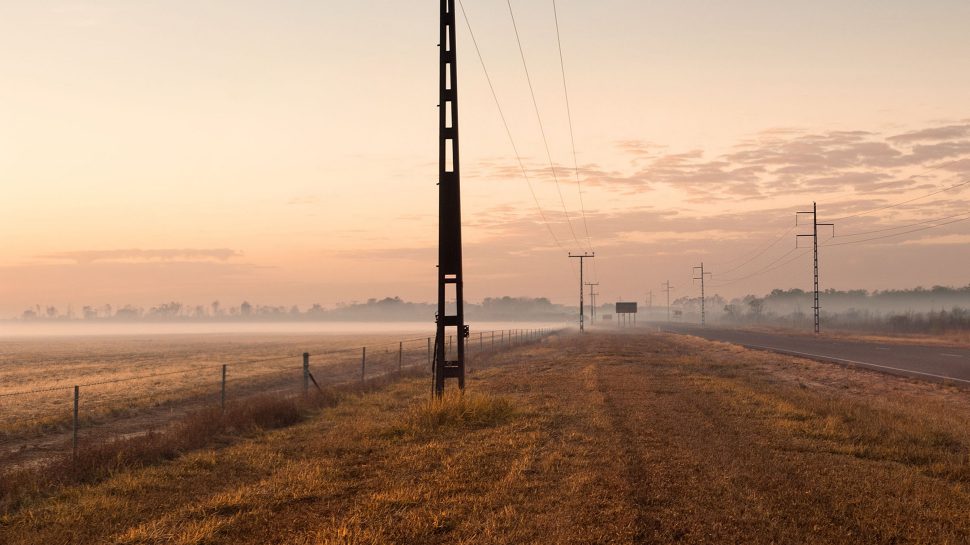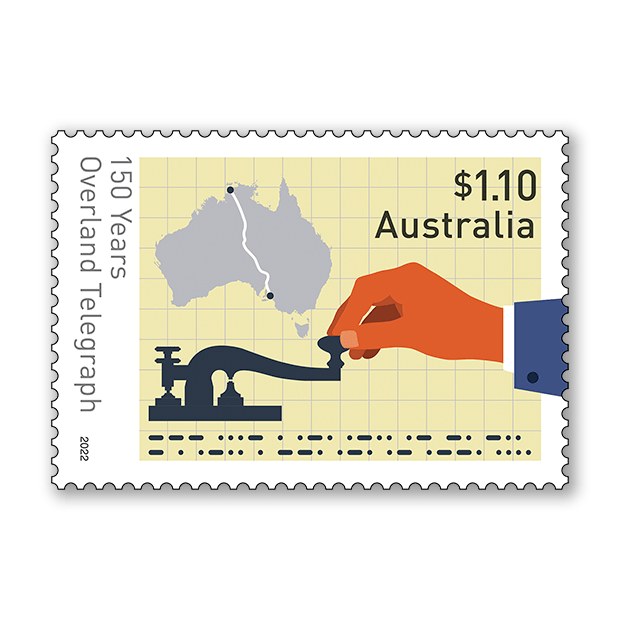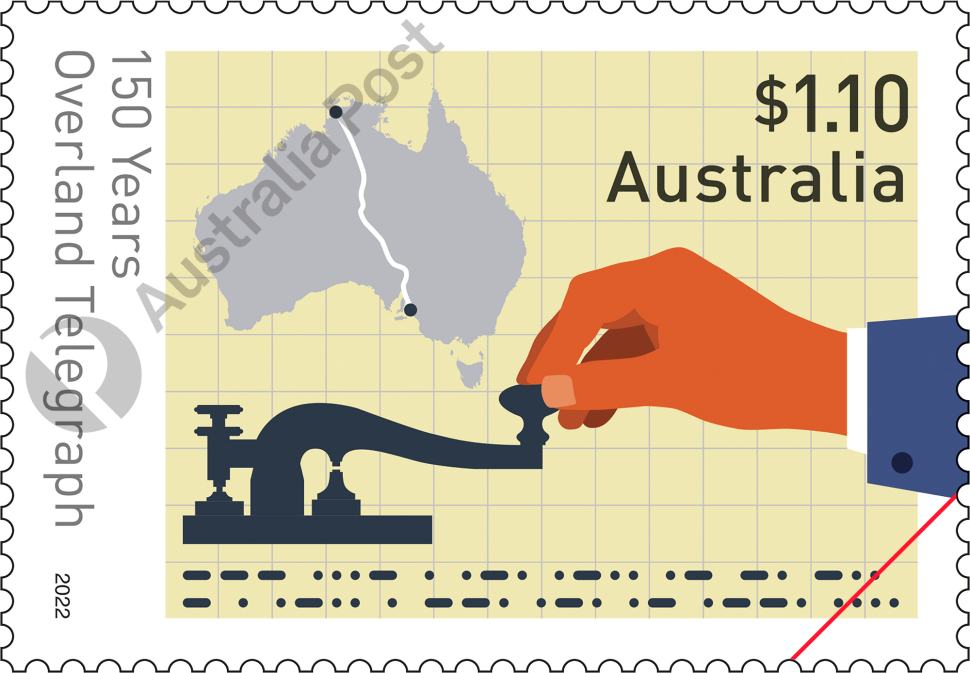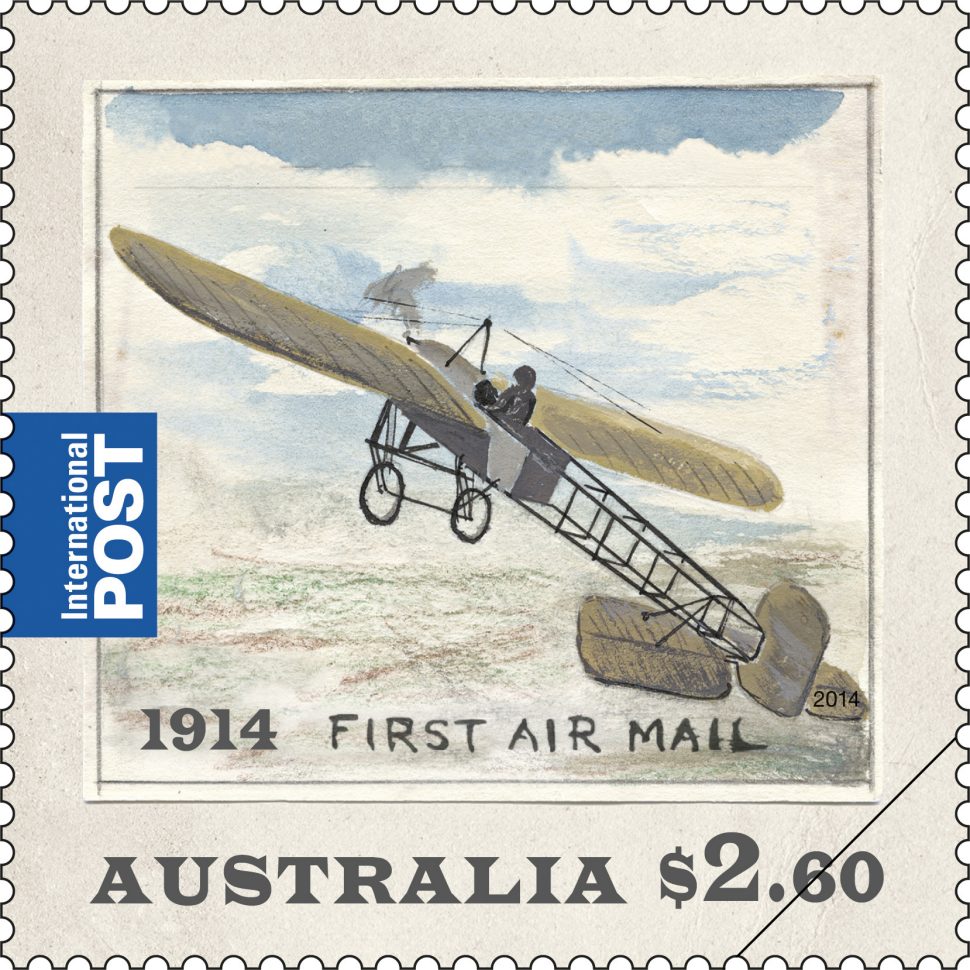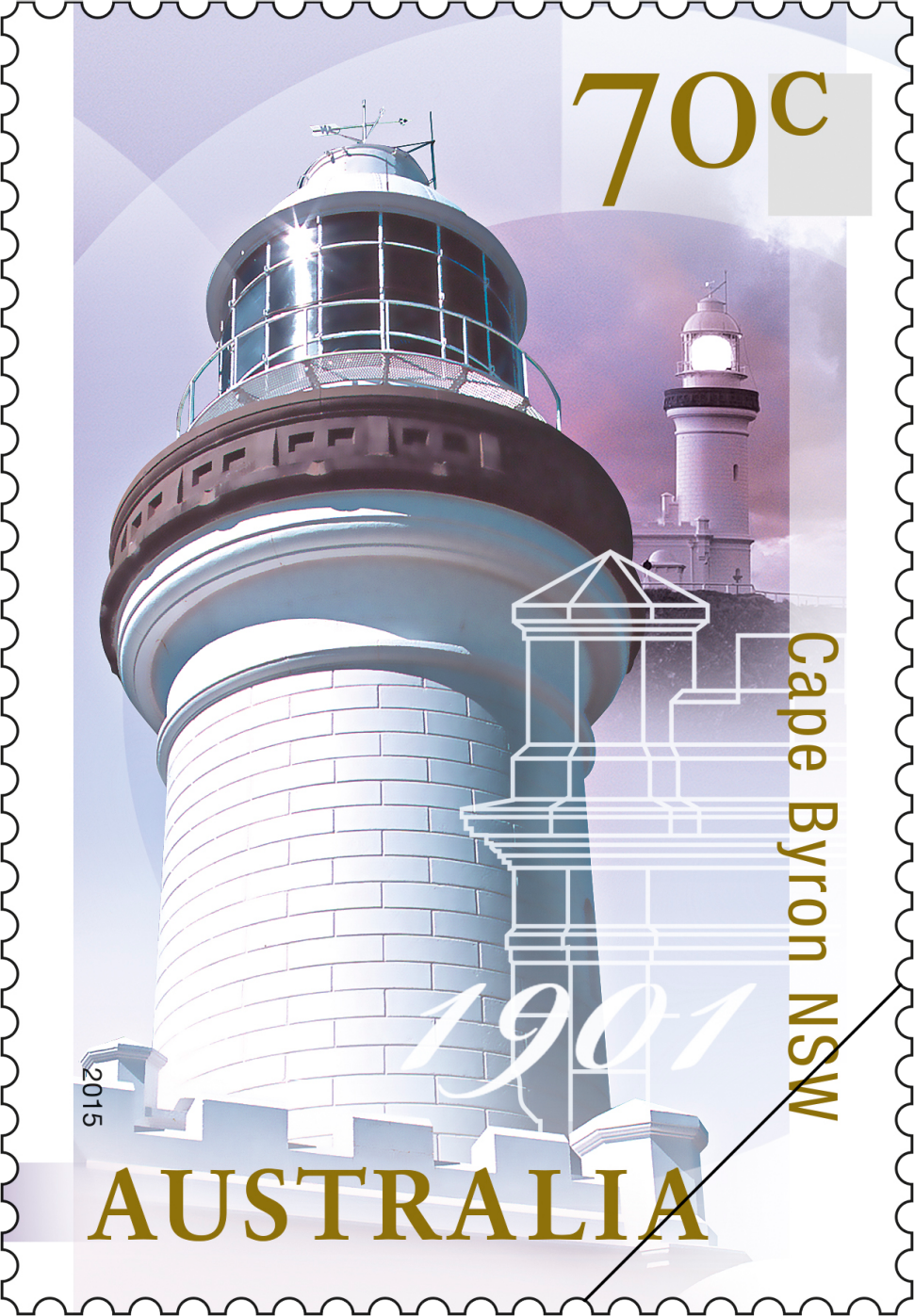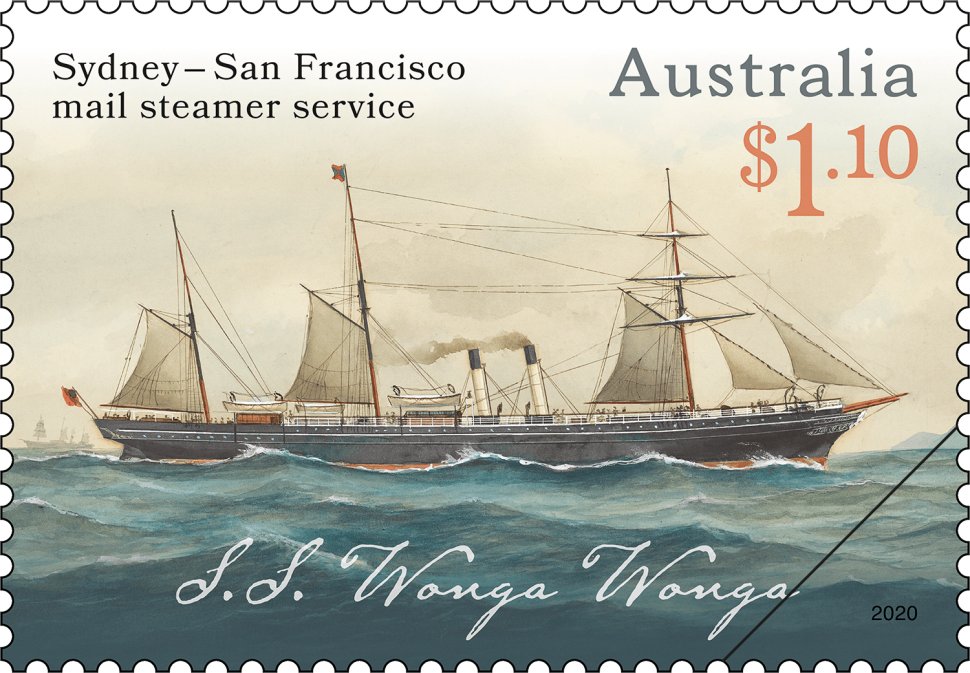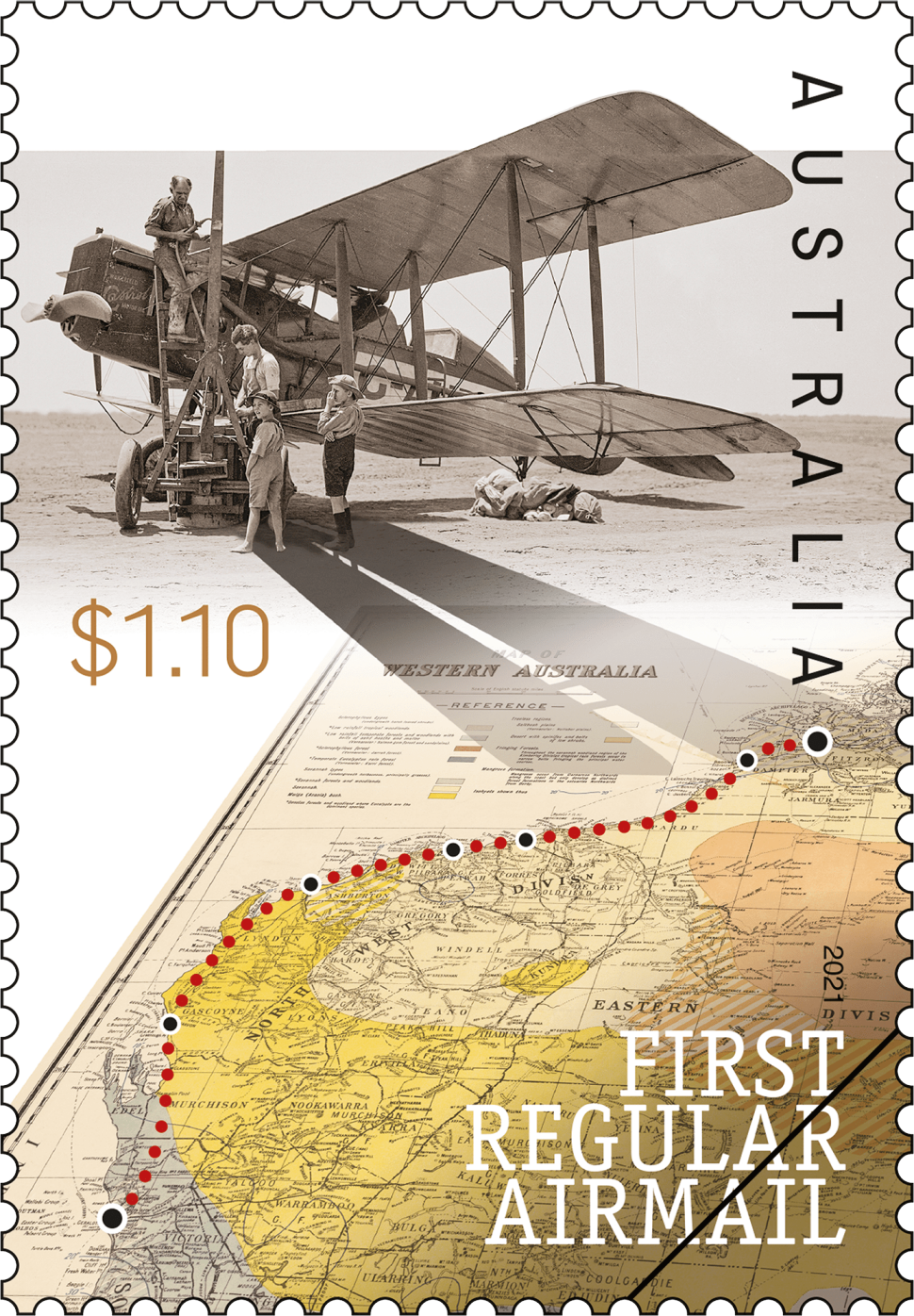Overview
On 22 August 1872, the Overland Telegraph line between Adelaide and Darwin was finally connected. It was the result of years of planning and many months of arduous construction through the arid centre of the continent and the wet, mosquito-infested terrain of the Top End. This huge logistical achievement of has been called the greatest engineering feat of 19th-century Australia. It dramatically transformed the speed and breadth of communications within the country and, within two months of opening, the rest of the world via an undersea cable from Darwin to Java (Indonesia).
Charles Todd, South Australia’s Superintendent of Telegraphs and Postmaster General was the visionary responsible for bringing the project to realisation, within a mere two years of the planting of the first pole.
The Overland Telegraph involved a single galvanised wire supported by 36,000 poles across 2,839 kilometres from Port Augusta in the south to Darwin in the north. Eleven manned repeater stations constructed along a virtually unexplored route received and sent messages in Morse Code, with banks of chemical batteries at each station providing the electrical power. Communication between the cities of the eastern seaboard, via Adelaide and Darwin, now took minutes rather than weeks.
Technical specifications
- Issue date
- 23 August 2022
- Issue withdrawal date
- 28 February 2023
- Denomination
- $1.10 x 1
- Stamp design
- Jonathan Chong
- Product design
- Simone Sakinofsky, Australia Post Design Studio
- Paper: gummed
- Tullis Russell 104gsm Red Phos.
- Printer
- RA Printing
- Printing process
- Offset lithography
- Stamp size (mm)
- 37.5 x 26
- Sheetlet size (mm)
- 101 x 151
- Perforations
- 13.86 x 14.6
- Sheet layout
- Sheetlet of 10
- FDI Postmark
- Alice Springs NT 0870
- FDI withdrawal date
- 20 September 2022
$1.10 Overland Telegraph
The stamp takes a graphic approach to depict various elements relevant to the Overland Telegraph project. There’s a Morse code key, which represents the fact that the telegraph messages were sent and received through the electrical wire by Morse code, which is a series of sounded dots and dashes. These had to be received by Morse code at each station, carefully written down, then sent in Morse code to the next station. Although widespread by the 1870s, this was relatively recent technology. The electric telegraph was invented in 1837 and International Morse Code only adopted in 1865. The map depicts the route followed by the Overland Telegraph and the Morse code at the bottom of the stamp spells out “Overland Telegraph”.
Shop our stamp collectables
Single stamp:
Single 150 Years: Overland Telegraph Gummed Stamp
The single 150 Years: Overland Telegraph $1.10 gummed stamp takes a graphic approach to depict various elements relevant to the Overland Telegraph project.
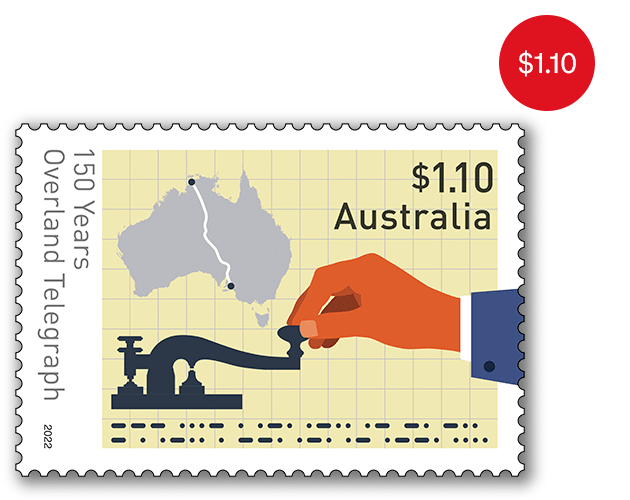
Sheetlet pack:
150 Years: Overland Telegraph Sheetlet Pack
The 150 Years: Overland Telegraph sheetlet pack contains the sheetlet of 10 x $1.10 stamps from the stamp issue presented in a high-quality folder.
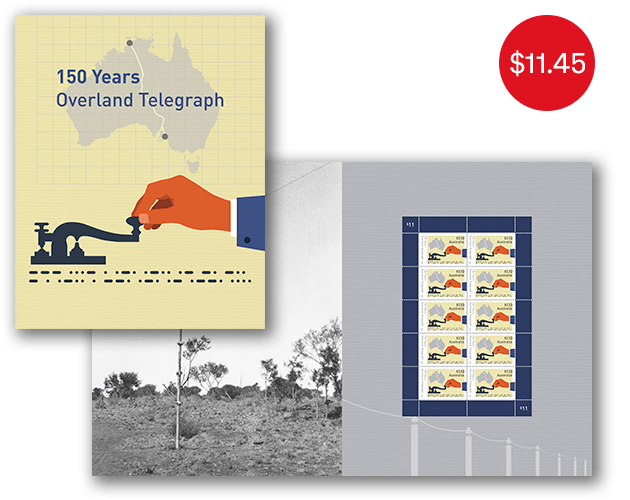
Sheetlet of 10:
Sheetlet of 10x 150 Years: Overland Telegraph Stamps
This gummed sheetlet contains 10 x $1.10 stamps from the 150 Years: Overland Telegraph stamp issue.
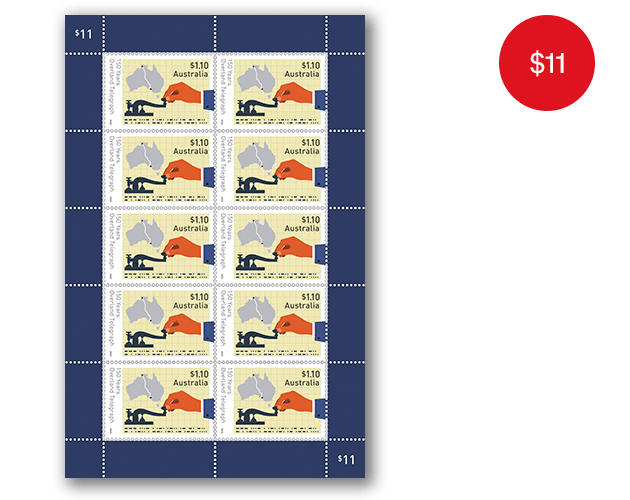
Maxicard:
150 Years: Overland Telegraph Maxicard
The 150 Years: Overland Telegraph maxicard is a prepaid postcard with the single stamp from the stamp issue affixed and postmarked on the view side.
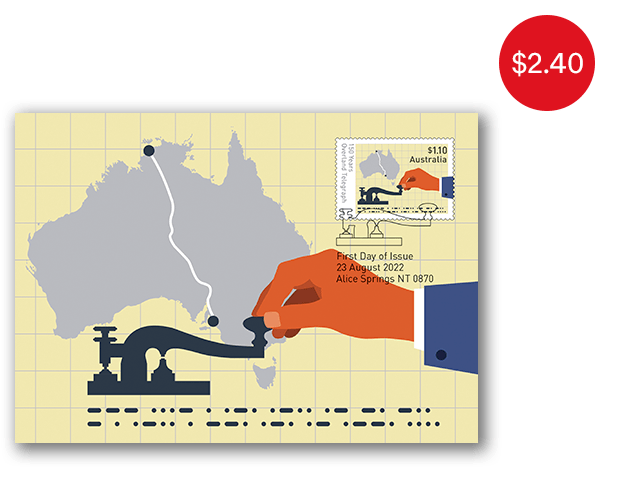
- Single stamp
- Sheetlet pack
- Sheetlet of 10
- Maxicard
Additional collectables:
- Pictorial Envelope for the 150 Years: Overland Telegraph Stamp Issue
- 150 Years: Overland Telegraph First Day Cover (Gummed Stamp)
- 150 Years: Overland Telegraph Perth Mint Postal Numismatic Cover
- 150 Years: Overland Telegraph RAM Postal Numismatic Cover
This content was produced at the time of the stamp issue release date and will not be updated.
